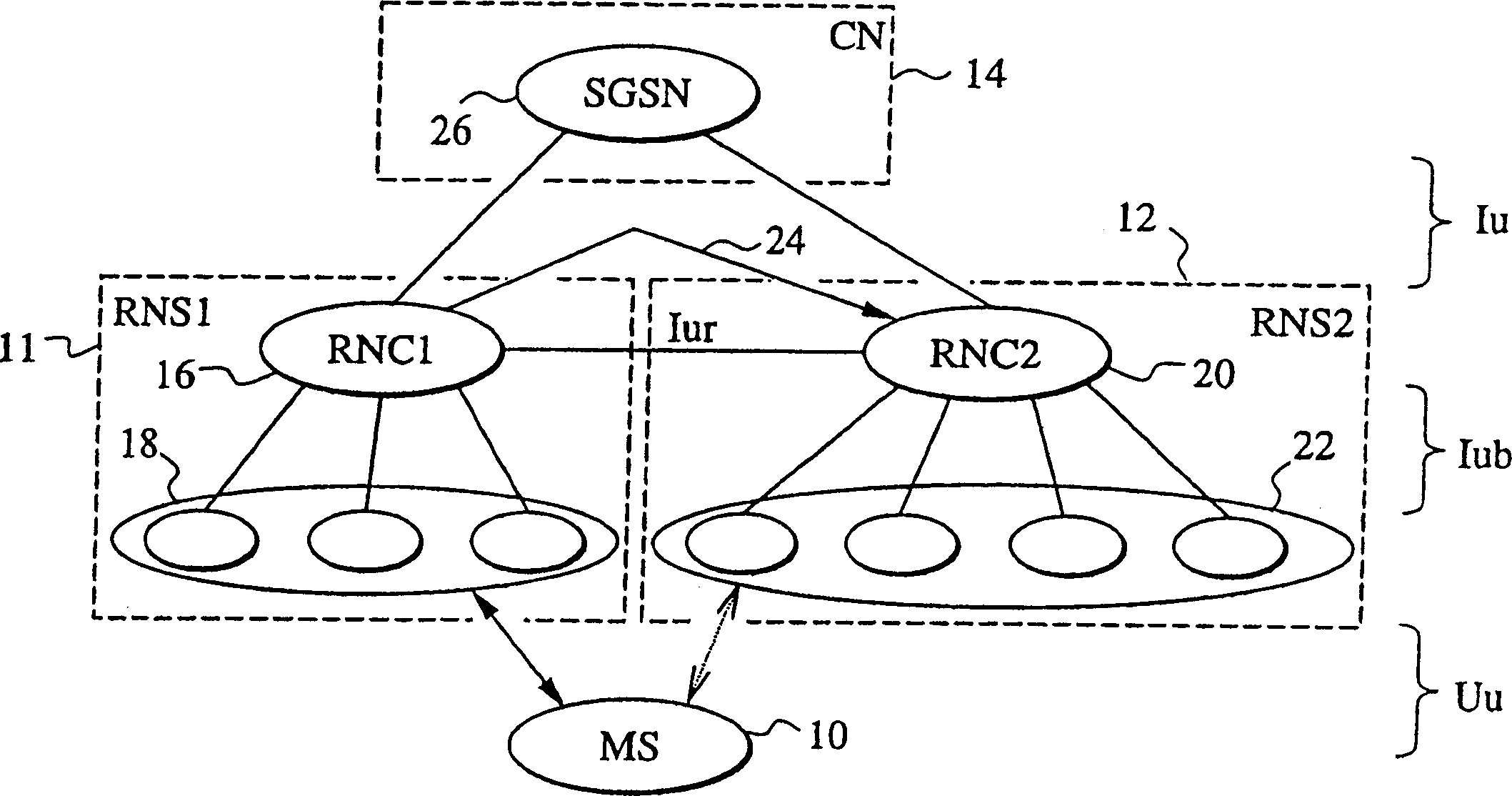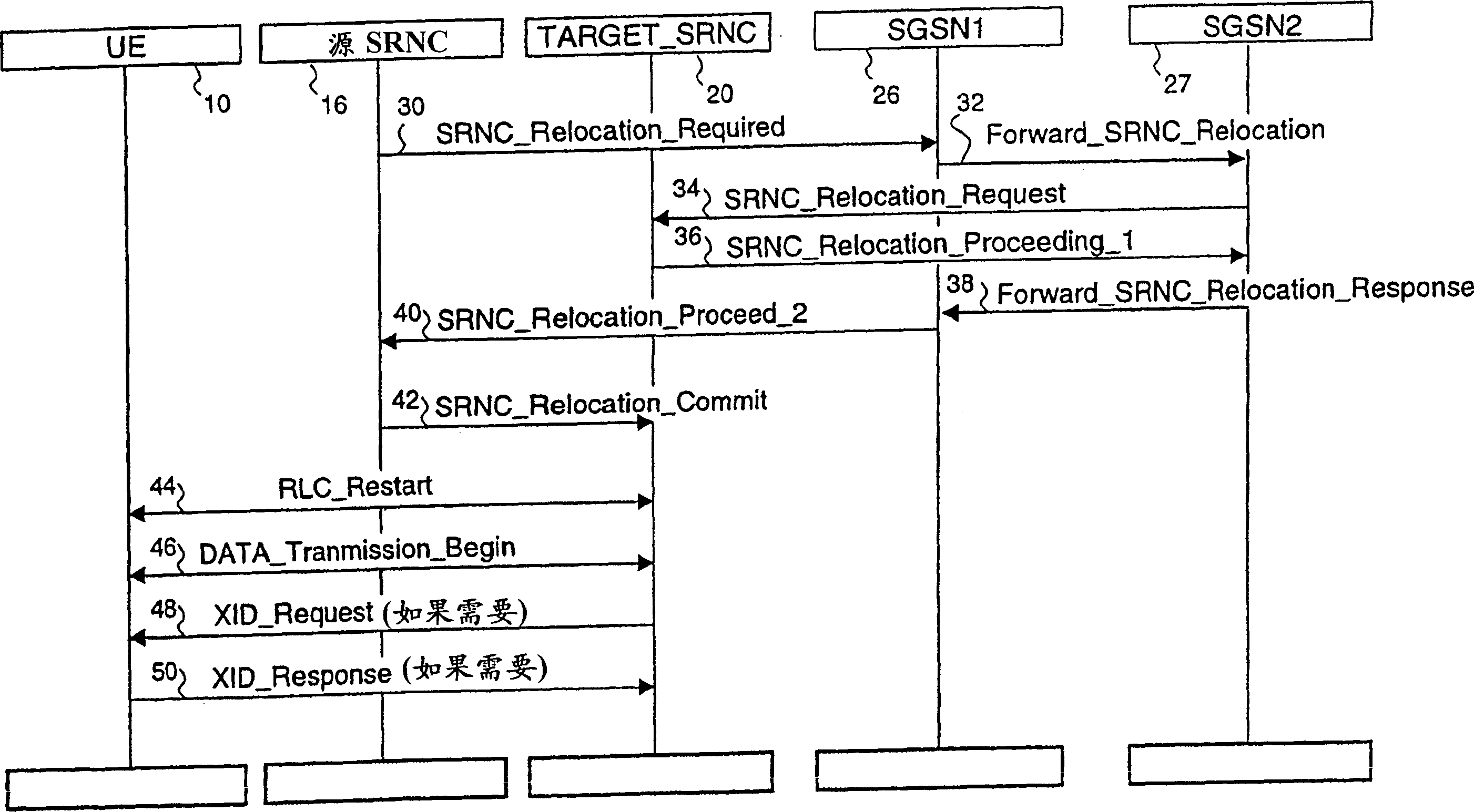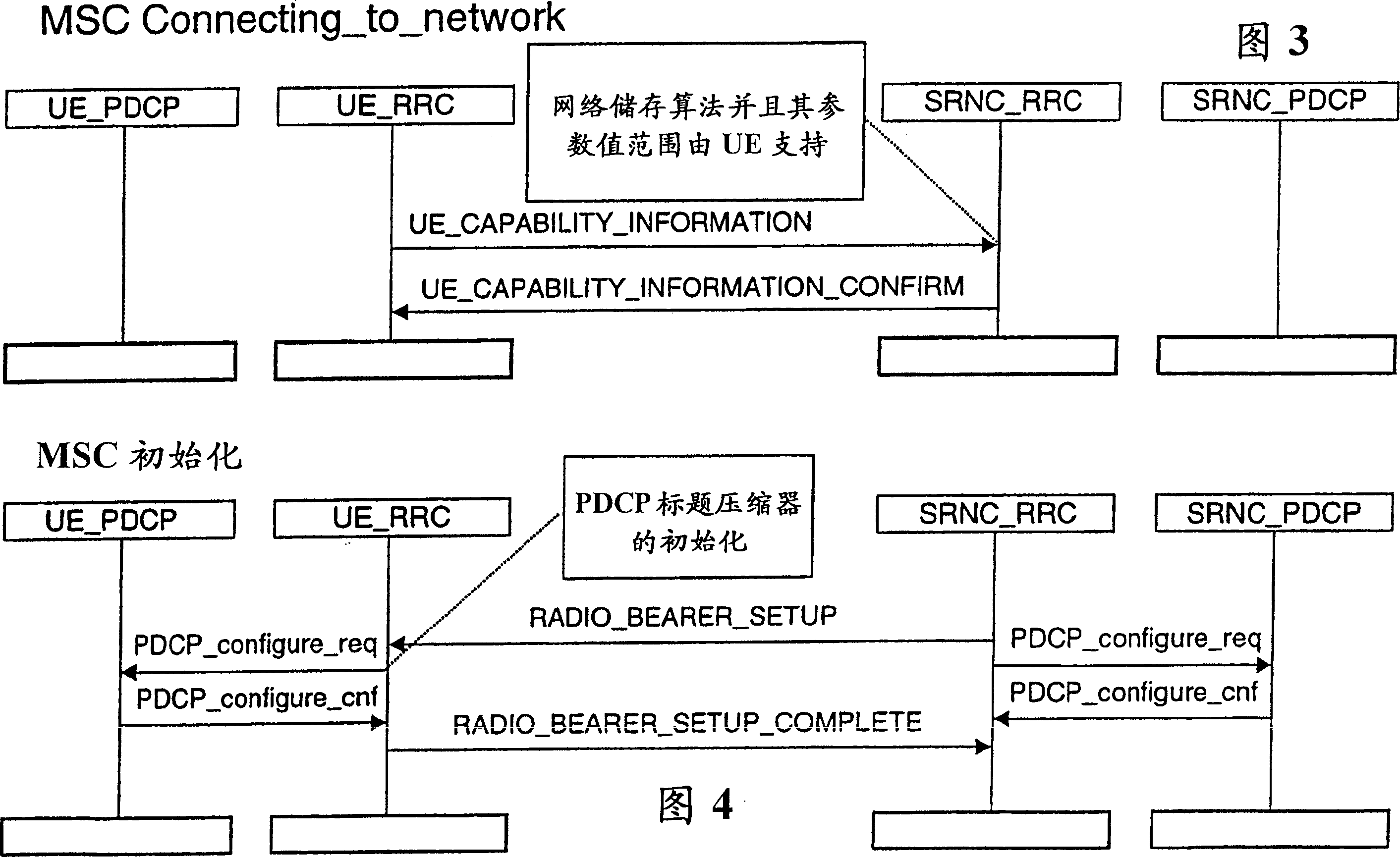Transfer of algorithm parameters during handover of mobile station between radio network subsystems
A wireless network and subsystem technology, which is applied in the field of algorithm parameter transmission during handover of a mobile station between wireless network subsystems to achieve the effect of saving resources and facilitating real-time connection
- Summary
- Abstract
- Description
- Claims
- Application Information
AI Technical Summary
Problems solved by technology
Method used
Image
Examples
Example
Example 1
Fig. 3 shows an example of negotiation of header compression (HC) parameters. When the mobile station uses the UE CAPAPBILITY INFORMATION (UE capability information) message to connect to the network RRC, and inform the SRNC about the header compression (HC) method and its parameters that the UE can use. This information is left to the network to update and take care of.
After comparing the network's own and these receiving parameters, the network makes a decision on the HC method to be used, taking into account the needs of QoS. Therefore, it is possible to choose the most probable HC method (in other words, the method of the first configuration can be selected as the real-time service optimization method or not according to QoS requirements). After the network makes its decision to configure its compressor, it uses the RRC message RADIO BEARER SETUP (Figure 4) or RADIO BEARER RECONFIGURATION (Figure 5) to configure the algorithm of the compressor in the UE. Related par...
Example
Example 2
In addition, when the mobile station uses the UE CAPAPBILITY INFORMATION message of Figure 3 to connect to the network RRC, it notifies SRNC_RNC about the required header compression (HC) method and related parameters that the UE can use. This information is left to the network for updates and care.
The network selects the methods that can be supported according to the methods it supports and the methods supported by the UE. After that, the network can simultaneously send the parameters of all supported methods to the UE by using a message. This means that both the network and the UE know which methods can be supported. In this case, OPT tables representing different packet types of different methods are similarly generated at both ends. This information transmission can be performed by using the RRC message RADIO BEARER SETUP (radio bearer setup) as shown in FIG. 4 or RADIO BEARER RECONFIGURATION (radio bearer reconfiguration) as shown in FIG. 5. At the same time, noti...
Example
Example 3:
It is also possible that the network informs the UE about the methods it supports when connecting to the network and in the case of SRNS relocation after the SRNC_relocation_Commit message. In this case, the UE uses some signaling based on RADIO BEARER SETUP (Figure 4) and RADIO BEARER RECONFIGURATION (Figure 5) to start sending compressor parameters and follow example 1 or 2. Start the compressor generation process, the difference is that the UE sends configuration messages and the network receives these messages.
The current (prior art) solution in GPRS is to perform XID negotiation again when the location of the SGSN changes (handover between SGSNs). This negotiation is needed because the SNDCP and LLC protocols are in the SGSN and the new SGSN does not know the old XID parameters (and they may not be applicable). Perform XID negotiation for some (most but not all) LLC and SNDCP parameters, such as header compression parameters.
However, this method is not very sui...
PUM
 Login to View More
Login to View More Abstract
Description
Claims
Application Information
 Login to View More
Login to View More - R&D
- Intellectual Property
- Life Sciences
- Materials
- Tech Scout
- Unparalleled Data Quality
- Higher Quality Content
- 60% Fewer Hallucinations
Browse by: Latest US Patents, China's latest patents, Technical Efficacy Thesaurus, Application Domain, Technology Topic, Popular Technical Reports.
© 2025 PatSnap. All rights reserved.Legal|Privacy policy|Modern Slavery Act Transparency Statement|Sitemap|About US| Contact US: help@patsnap.com



